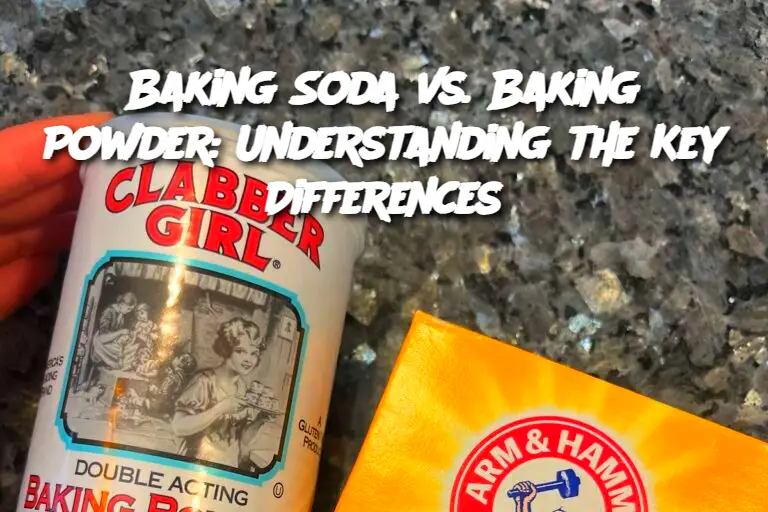ADVERTISEMENT
Introduction
When it comes to baking, understanding the difference between baking soda and baking powder is crucial for achieving the perfect texture and rise in your baked goods. Though they may look similar and serve a leavening purpose, they function differently and are not interchangeable in most recipes. This article will explore their distinct properties, how they work, and how to use them correctly in various recipes.
Ingredients
To better understand baking soda and baking powder, let's break down their components:
Baking Soda (Sodium Bicarbonate): A single-ingredient alkaline compound that requires an acid to activate.
Baking Powder: A mixture that contains baking soda, an acid (usually cream of tartar), and a drying agent (typically cornstarch).
Instructions
How Baking Soda Works:
Baking soda is a pure base that needs an acidic ingredient like vinegar, lemon juice, buttermilk, or yogurt to trigger a chemical reaction.
Once combined with an acid and liquid, it produces carbon dioxide, creating bubbles that help the batter rise.
It reacts immediately, so baked goods using baking soda should be baked quickly after mixing.
How Baking Powder Works:
Baking powder contains both an acid and a base, making it a complete leavening agent.
It typically has a double-acting formula, meaning it reacts in two stages—once when mixed with liquid and again when exposed to heat in the oven.
This makes it more forgiving and ideal for recipes without acidic ingredients.
When to Use Each One:
Use Baking Soda in recipes that include acidic components, such as chocolate cake, buttermilk pancakes, and cookies with brown sugar or molasses.
Use Baking Powder in recipes that don’t contain acids, such as vanilla cakes, biscuits, or pancakes made with milk.
Serving and Storage Tips
Storage: Keep both baking soda and baking powder in airtight containers in a cool, dry place.
Shelf Life:
Baking soda lasts for a long time if kept dry, but test its potency by adding a little vinegar—if it fizzes, it’s still good.
Baking powder should be replaced every 6–12 months for best results. Test it by mixing a small amount with warm water; if it bubbles actively, it’s still effective.
Variations
ADVERTISEMENT
